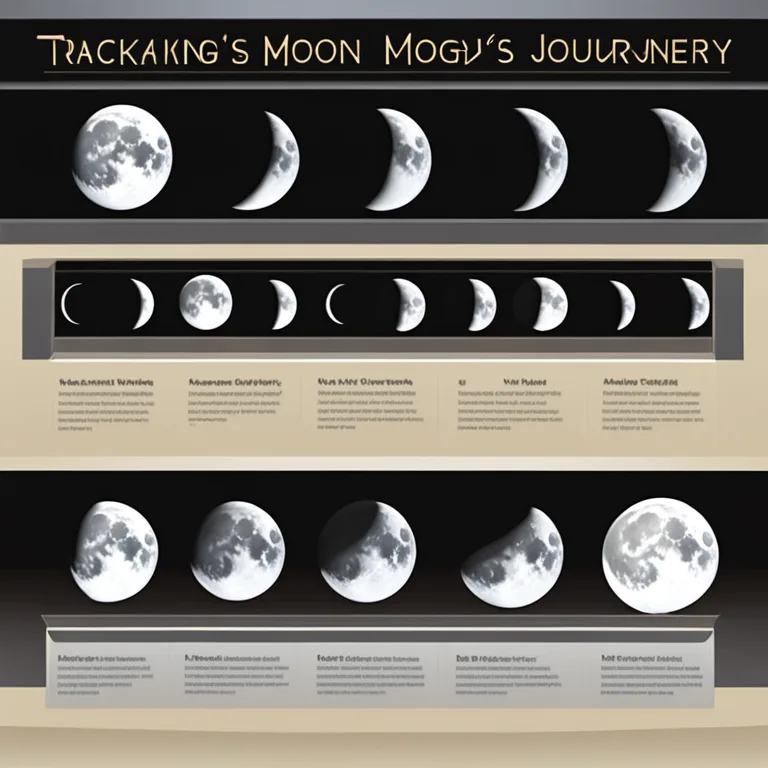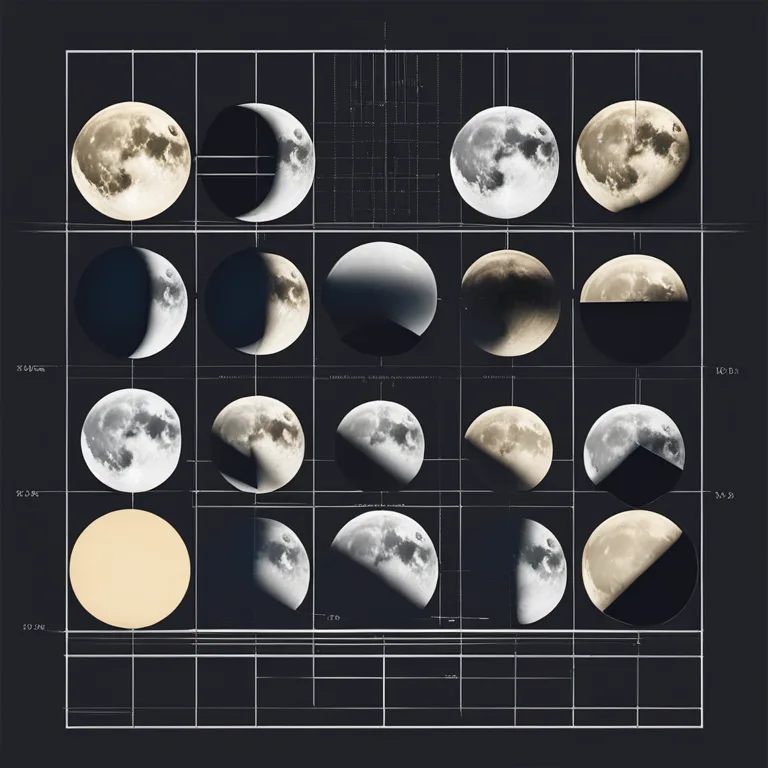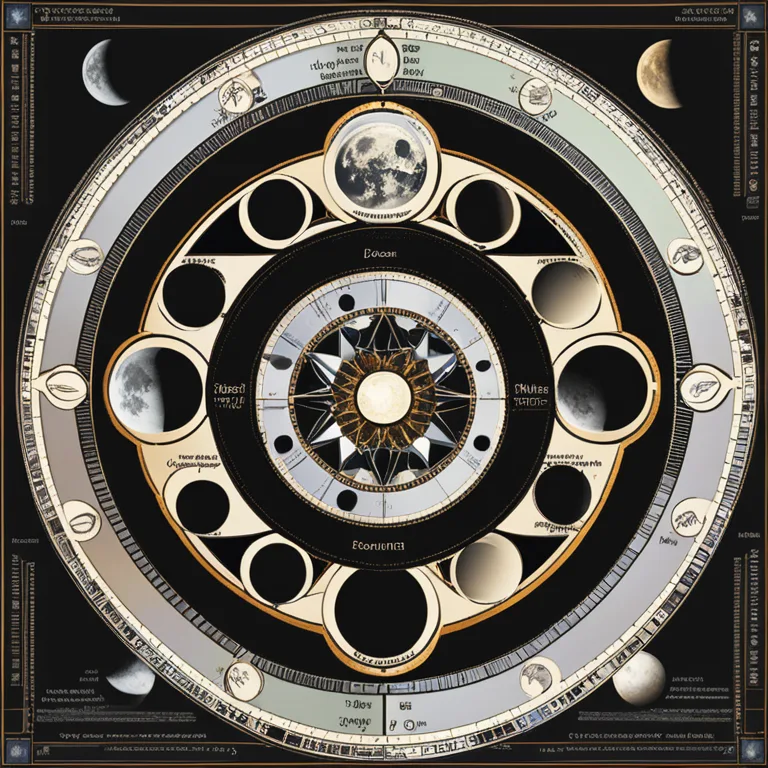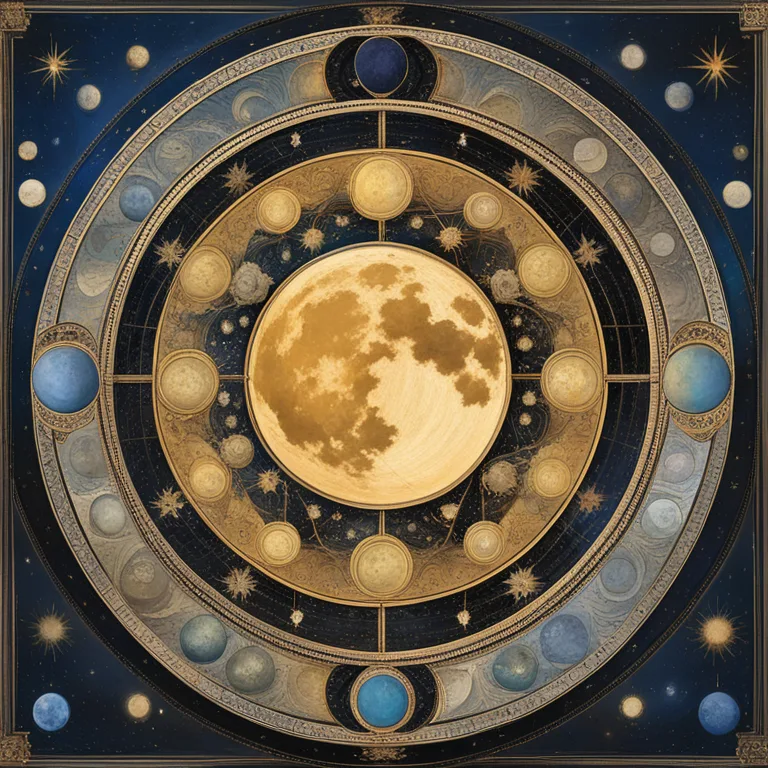
Finding Your Moon Phase: A Guide
Learn how to discover the current lunar phase accurately for personal astrology insights and horoscope planning.
article by Priya Deshmukh
Introduction to Moon Phases
The Moon's voyage around Earth is enchanting and holds a pivotal role in astrology. Understanding the Moon's phase can provide profound insights into one's emotions and behaviors, according to astrological beliefs. The phase of the Moon at any given time reflects the angle between the Earth, Moon, and Sun. This journey through various phases has fascinated humanity, and herein lies the purpose of the article – to guide you on how to find the current moon phase for your astrological explorations.

Lunar Phases Overview
Lunar phases are traditionally classified into eight distinct stages. Starting with the New Moon, which occurs when the Moon is directly between the Earth and Sun, invisible to us. The cycle progresses to a Waxing Crescent, First Quarter, Waxing Gibbous, Full Moon, Waning Gibbous, Last Quarter, and finally the Waning Crescent before returning to the New Moon. Each phase lasts approximately 3.5 days, completing a full cycle in about 29.5 days. These stages have specific astrological meanings that are believed to influence our lives.

Tracking the Moon's Journey
One of the simplest methods to find the current moon phase is by viewing the Moon in the sky, although this relies on clear weather and visible celestial conditions. Moreover, the Moon's appearance varies depending on your location on earth. Several resources, including mobile applications, websites, and astrological almanacs, provide real-time updates and images of the Moon's phase. These platforms often incorporate advanced algorithms and astronomical data to offer precise lunar phase details.

Significance for Astrology in 2024
As we look towards the forthcoming year, 2024, understanding lunar phases becomes crucial for astrological predictions and horoscope formation. Each phase is imbued with specific indications and energies. For instance, the New Moon is traditionally associated with new beginnings, making it an ideal time for initiating projects. Conversely, the Full Moon is often linked with culmination and reflection, a period for gratitude and releasing what no longer serves us.

Utilizing Lunar Calendars
Lunar calendars are an essential tool for anyone deeply interested in astrology. They provide a roadmap of the Moon's cycle, highlighting key astrological events months in advance. For the year 2024 and beyond, make sure to use an updated lunar calendar that considers leap years and other astronomical phenomena. This investment can improve the accuracy of your astrological readings and the personal relevance of your horoscope.
Engaging with Astronomy
Developing a basic understanding of astronomy can enrich your ability to find and interpret moon phases. As astrology and astronomy are intertwined, learning about celestial mechanics allows for a deeper appreciation of the astrological implications. Consider attending local astronomy club meetings or visiting planetariums for a hands-on experience and direct observation of the Moon, assisted by experts.
When to Observe Important Transitions
Particular attention should be given to eclipses and supermoons in the year 2024. These events can bring about more intense energies, according to astrological traditions. Solar and lunar eclipses, for instance, are thought to be powerful times for setting intentions and manifesting change. Keeping track of when these transitions occur can be valuable for those who incorporate astrological insights into their daily lives.
Published: 12/22/2023
Modified: 12/22/2023
More predictions
Come back here soon to learn more about yourself and your future


All Phases of the Moon: A Guide
Delve into the lunar cycle’s key stages. This article elucidates the distinct phases of the moon and their significance.


Daily Insights & Numerology
Tap into the numerology of today to guide your path and daily decisions with tailored insights based on numerological analysis.


The Phases of the Moon: A Complete Handbook
Discover the distinct phases of the lunar cycle and their astrological significance in this comprehensive guide to Moon phases.